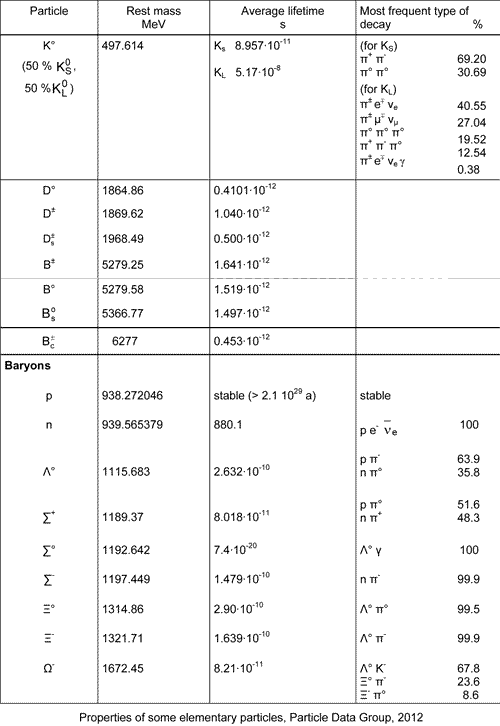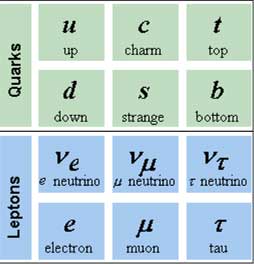Elementary particles refer to particles that cannot be easily recognized as a compound – in contrast to the nuclei of atoms. Within certain limits determined by the conservation rates, elementary particles can be converted.

The multitude of such „elementary particles“ – in addition to those listed in the table, a further 200 were found – led to the „invention“ and eventually to the discovery of the „quarks“ and subsequently to today’s „standard model“ of elementary particles. This standard model consists of twelve parts – see figure – and the same number of antiparticlesAntiparticles have the same mass, the same average life and .... Thus, the protonElementary particle with a positive electrical elementary ch... consists of two „up-quarks“ and one „down-quark“, the neutronUncharged elementary particle with a mass of 1.67492716 ·10... of one „up“ and two „downs“, where the up-quark has a charge of +2/3 and the down-quark -1/3 electric elementary charges to meet the electric charge conditions.

Standard model of elementary particles
